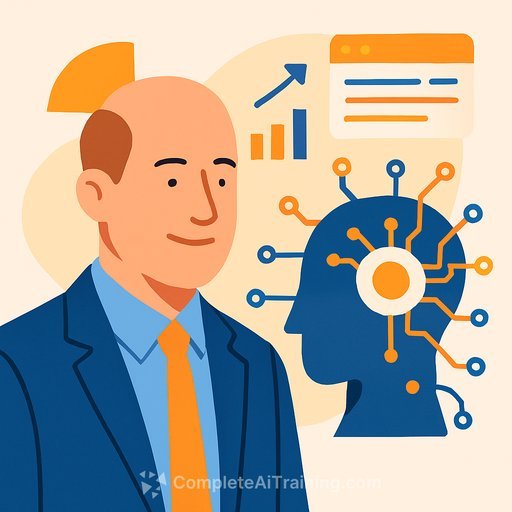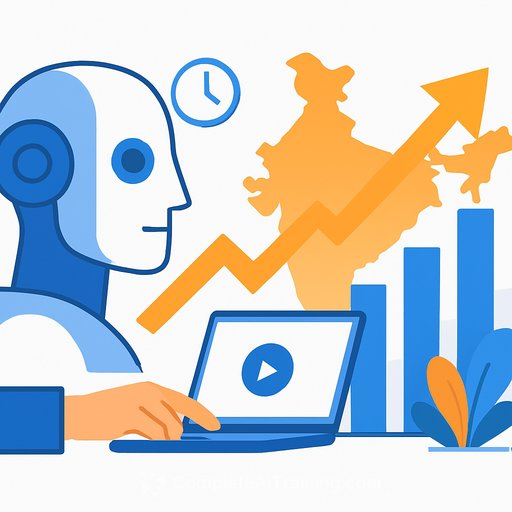Han Xiaofei on AI, Fission Marketing, and the Future of Cross-Border Growth
Ask Han Xiaofei about the future of marketing and she won't talk about catchy campaigns. She'll talk about infrastructure, algorithms, and the human intent behind them. Her work blends AI with fission marketing to build systems that learn, adapt, and actually respect users. Recently honored with the Eternal TITAN of Growth award, she keeps the focus clear: technology is the bridge, not the destination.
Marketing Is Infrastructure, Not Just Messaging
Han's thesis is simple: durable growth comes from systems-technical, organizational, and human. Think machine learning models that predict behavior, cross-border data pipelines that keep context intact, and teams trained to act on signal, not noise. The point isn't to "hack" algorithms. It's to design engines that keep listening and improving.
She frames marketing as a conversation. AI should help brands listen better, respond faster, and act with empathy. That only happens if we build for it from day one.
AI + Fission Marketing: From Gut-Driven to Data-Guided
Fission marketing turns users into advocates who distribute value through their own networks. In China, it flourished on platforms like WeChat, where social trust is part of daily life. Early on, Han noticed teams copying viral playbooks without context-and getting inconsistent results.
Her fix was a layer of intelligence: real-time segmentation to see who shares and why, NLP to tailor prompts by behavior and personality, and live dashboards to surface what's working. The shift wasn't louder campaigns. It was smarter systems.
A Concrete Win: The "Micro-Conduit" Strategy
A wellness brand stuck in flat growth had tried influencers and generic referrals with little impact. After adding an AI layer, Han's team found the true drivers weren't influencers at all-they were mid-tier customers who loved niche content.
The team activated these "micro-conduits" with personalized stories and wellness tips aligned to their values. The system tested tone, timing, and incentives in real time. Three weeks later, participation tripled and conversions doubled. Same product. Better orchestration.
China vs. U.S.: Two Operating Conditions
Han sees both structural and cultural differences. In China, companies adopt quickly and push end-to-end automation across the business. Data integrates faster across platforms. In the U.S., there's tighter focus on privacy, compliance, and modular solutions-optimizing parts of the workflow without rebuilding the whole stack.
She values both approaches. Speed creates compounding learning. Guardrails create trust. If you operate in the U.S. or target EU users, your stack should respect frameworks like the GDPR. See the official EU guidance for clarity on principles and obligations: EU Data Protection.
Building the Stack: The Dual-Tower Behavior Model
While at California State University, Long Beach, Han led development of the Consumer Click Behavior and Comparative Dual-Tower Model. It tracks micro-interactions-dwell time, scroll patterns, abandonment signals-and pairs real-time observation with predictive scenarios.
Leaders could simulate outcomes: What if we redesign a product page? End a promo early? In one case, the model flagged rising interest in a category before sales reflected it. A retailer moved inventory early and avoided stockouts that hit competitors. That's proactive marketing, not after-the-fact reporting.
Enterprise Platforms With Context
In China, Han helped build decision-support systems across commercial and educational settings. A university used her forecasting engine to match student demand with instructor availability. A full-cycle sales platform automated onboarding through payment reconciliation, cutting delays and data loss while improving decision speed.
The tech can look similar across borders, but needs differ by culture and institution. Her rule: never assume plug-and-play. Fit the system to the context.
Human-Centered AI, By Design
Han's academic work anchors her practice: progress without human alignment is just noise. She pushes teams to ask: Is this outreach respectful? Is the prediction fair? Does the user feel seen? Those questions don't slow growth-they create it.
If you're formalizing your approach, the NIST AI Risk Management Framework is a solid reference for practical guardrails: NIST AI RMF.
Recognition, Then Responsibility
Han's work earned recognition from the TITAN Business Awards. She treats awards as a checkpoint, not a finish line. She's continuing her MBA at Horizon University to deepen leadership and financial strategy while expanding her platforms across sectors that often lack investment-education, health, culture.
Her long-term aim: growth that is data-driven and dignity-driven. AI that scales insight-not just efficiency.
Playbook: How Marketers Can Apply This Now
- Instrument the journey: capture dwell time, scroll depth, hesitations-not just clicks and CTR.
- Find your micro-conduits: identify mid-tier advocates who share with intent, not just reach.
- Personalize prompts with NLP: vary tone, format, and offer by behavior and persona, then test continuously.
- Run real-time experiments: automate content, timing, and incentive tests; promote winners hourly, not weekly.
- Build a live command center: a dashboard for cohort trends, creative performance, and referral health.
- Add ethics guardrails: define fair-use rules, consent flows, and red-lines before you scale.
- Simulate before you ship: use predictive models to test scenario impact on conversion and inventory.
- Measure quality, not just quantity: track participation rate, share-to-install, referral LTV, and second-order effects.
"Marketing is how a company tells the world who it is." Han's work is a reminder that our story is only as good as the systems behind it-and the people those systems serve.
Upskill Your Team
If you're leading a marketing team and want structured AI training, explore the Marketing Specialist certification here: AI Certification for Marketing Specialists.
Your membership also unlocks:






